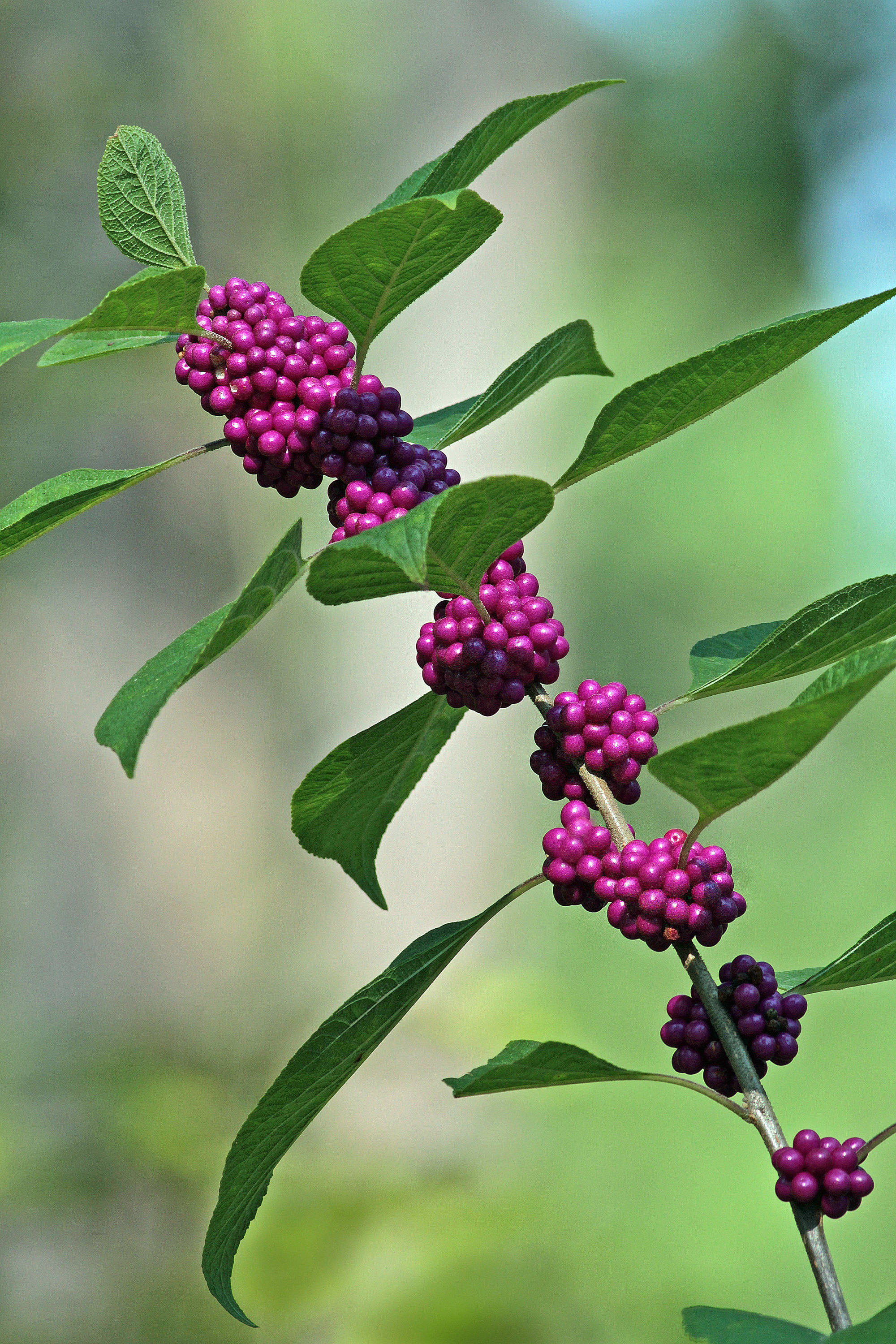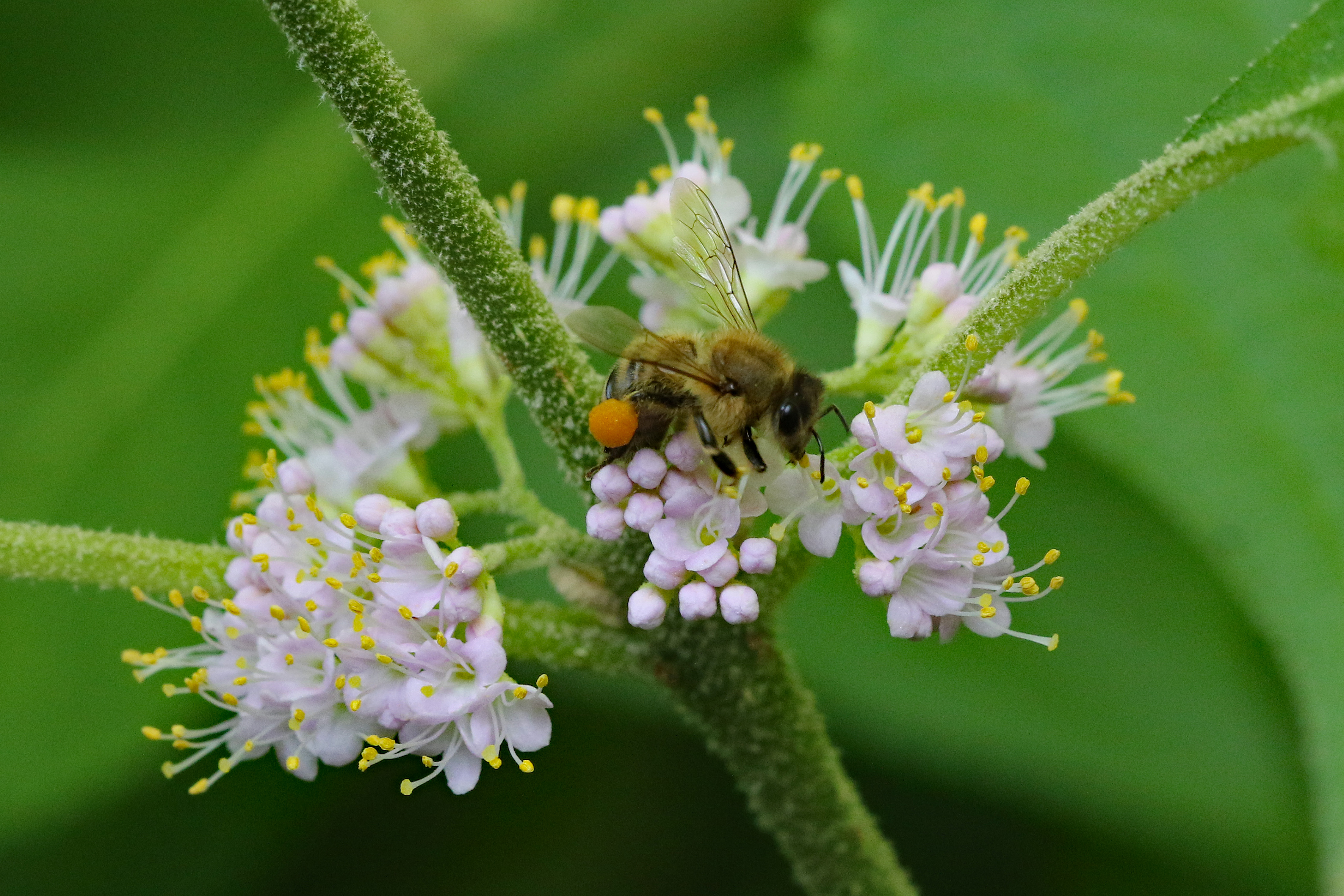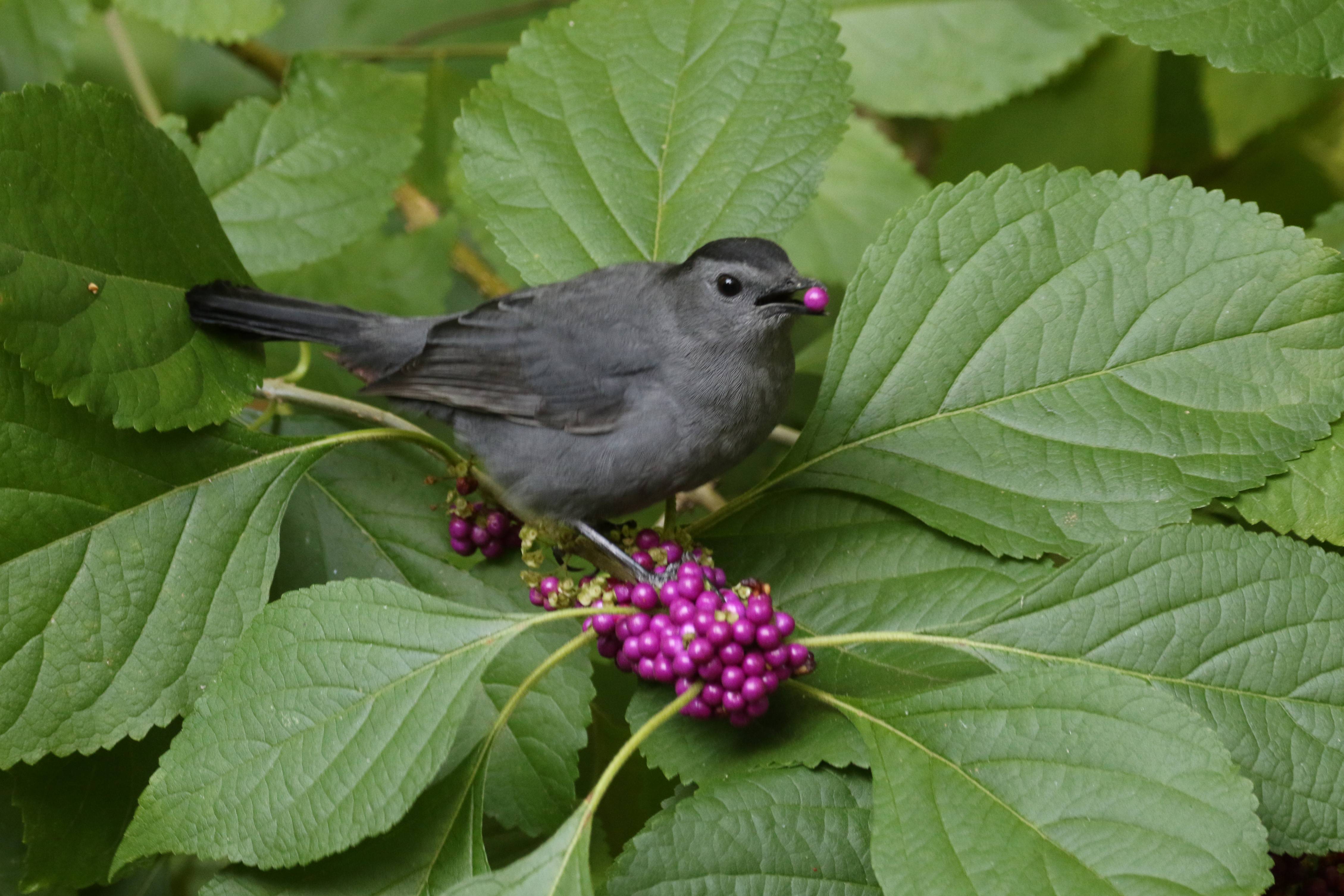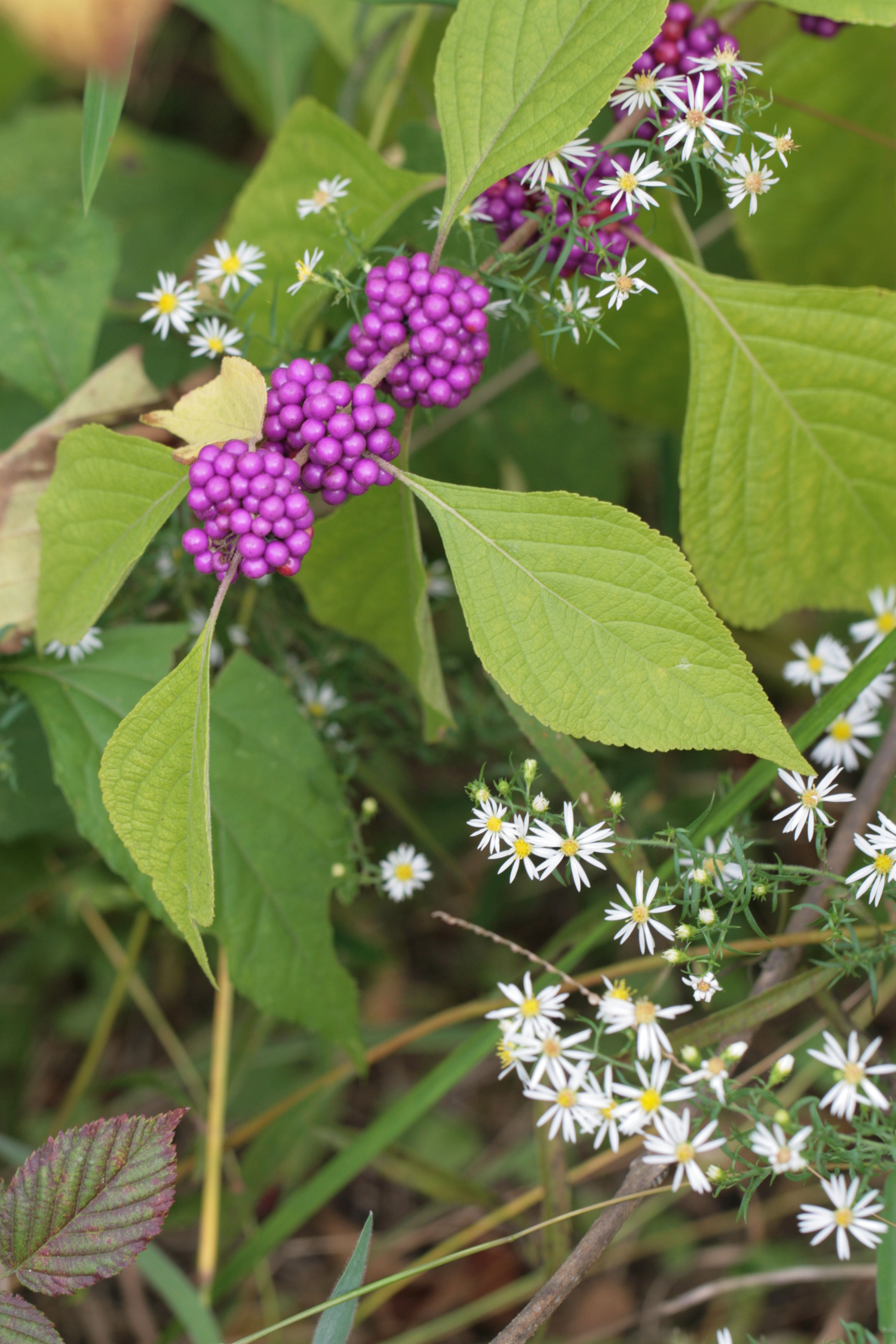NC Native Plant Society:
Plant Details
Callicarpa americana
Beautyberry, American Beautyberry, French-mulberry
Scientific Name: |
Callicarpa americana |
|---|---|
Genus: |
Callicarpa |
Species Epithet: |
americana |
Common Name: |
Beautyberry, American Beautyberry, French-mulberry |
Plant Type |
Shrub |
Life Cycle |
Perennial |
Plant Family |
Lamiaceae (Mint Family) |
Native/Alien: |
NC Native |
Invasive Status: |
(*Key) |
Size: |
3-6 ft., 6-12 ft. |
Bloom Color(s): |
Pink |
Light: |
Sun - 6 or more hours of sun per day, Part Shade - 2 to 6 hours of sun per day |
Soil Moisture: |
Dry, Moist |
Bloom Time: |
June, July |
Growing Area: |
Mountains, Piedmont, Sandhills, Coastal Plain |
Habitat Description: |
Hammocks, other forests (especially with sandy or rocky soils), maritime forests (the main habitat northward), disturbed areas. Rare in NC mountains, common in piedmont and coastal plain. |
Leaf Arrangement: |
Opposite |
Leaf Retention: |
Deciduous |
Leaf Type: |
Leaves veined, not needle-like or scale-like |
Leaf Form: |
Simple |
Life Cycle: |
Perennial |
Wildlife Value: |
Important for Wildlife |
Landscape Value: |
Suitable for home landscapes |
State Rank: |
S5: Secure (*Key) |
Global Rank: |
G5 - Secure (*Key) |
Notes: |
Sometimes placed in the Verbena Family [Verbenaceae]. Self-sows and can form a thicket. The magenta fruits are relished by some birds. |
|
Masses of bright purple fruits develop in leaf axils in autumn. Ripening fruits attract many species of birds.
Will Stuart |
|
|
Clusters of small pale pink tubular blossoms develop in leaf axils in early summer.
Will Stuart |
|
|
Leaves are opposite, simple, broadly elliptical to ovate and saw-toothed. Gray Catbirds are one of many native bird species that is attracted to the colorful and nutritious fruit.
Will Stuart |
|
|
A pretty combination with Symphyotrichum pilosum garden in Orange County, NC
Bettina Darveaux |
|
Links: |
Vascular Plants of NC: https://auth1.dpr.ncparks.gov/flora/plant_list.php NC Extension Gardener Plant Toolbox: https://plants.ces.ncsu.edu/plants/callicarpa-americana/ |
back to top
go to plant details search
go to plant images search
go to gallery home
back to Initial c Gallery
back to orchids
back to Carnivorous Plants
back to Trilliums







